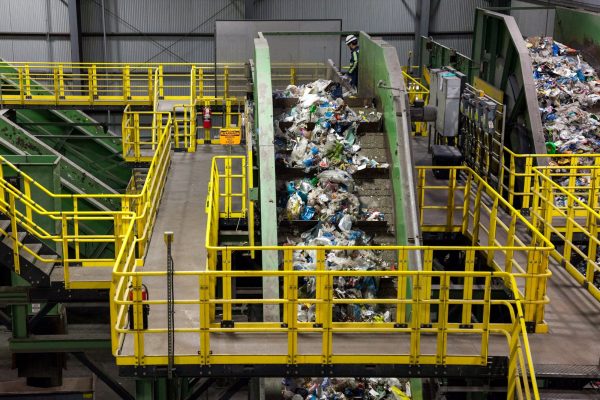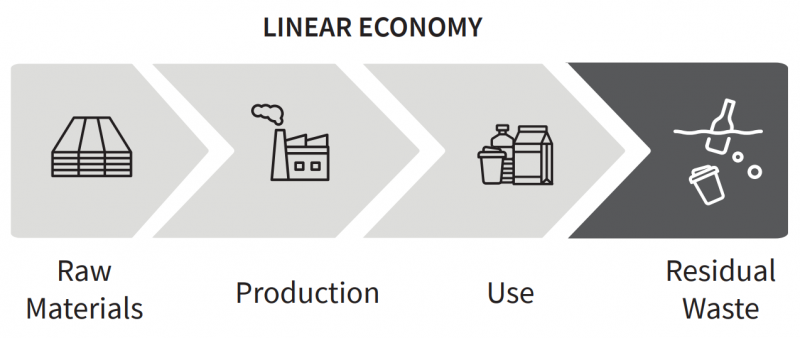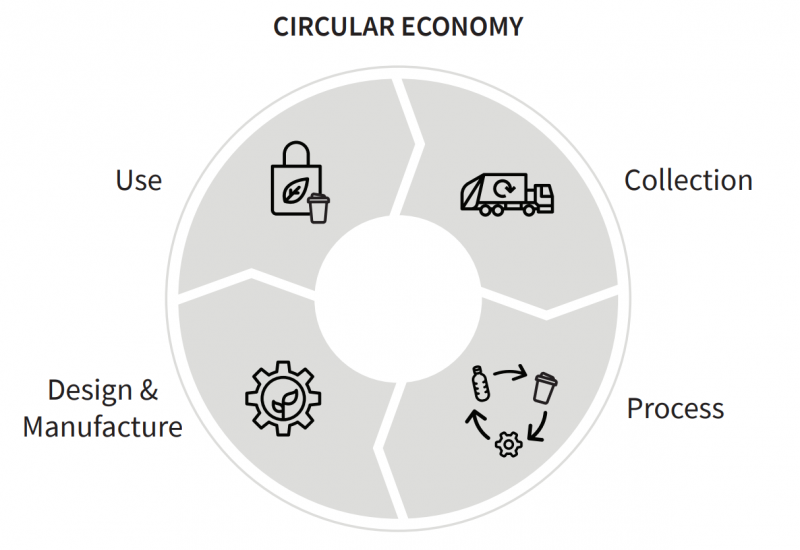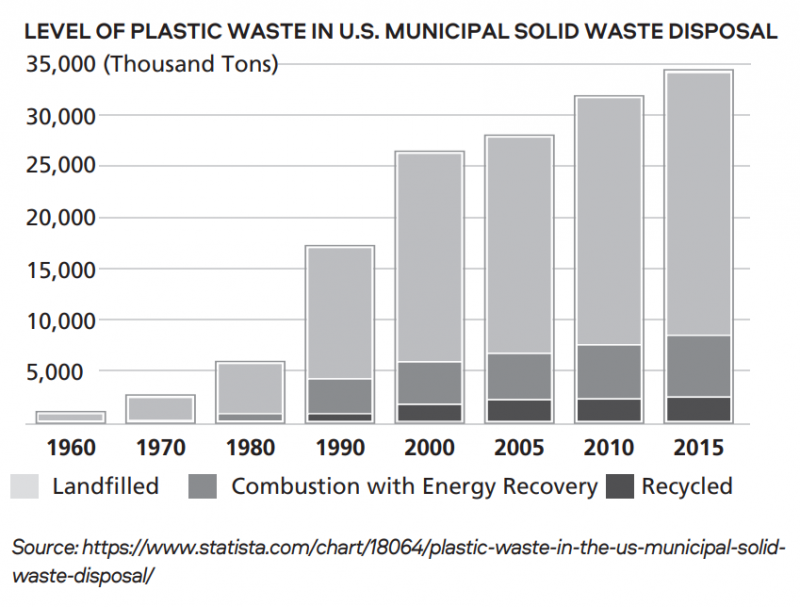The reshaping of an industry often starts with a question: What if?
What if we invested our money in a way that reflected our values?
Over thirty years ago, Amy Domini asked this question and began to rethink the premise of how we invest.

She identified companies that cared about environmental sustainability and human dignity. She gave investors the tools to apply socially responsible values to their portfolios. And she told investors: just because you want a seat at the table doesn’t mean you have to take the hand you’re dealt.
Reimagining an industry can seem radical—until it isn’t. From our experience, thirty years is about the length of time needed for the extraordinary to feel ordinary. Suddenly at the forefront of finance, impact investing is everywhere.
Today, it’s no longer a challenge for the financial industry to understand the importance of impact investing as it relates to protecting people and our planet. Instead, the question everyone asks is: how do we address it? Which brings us to the circular economy.
The circular economy gives us an opportunity to deliver on climate commitments and other ESG objectives. It’s crucial to helping us determine how to address our global challenges. That’s because just as Amy did with investing, the circular economy rethinks the premise. It asks: What if, instead of responding to environmental decay, we avoided creating waste and pollution in the first place? What if we dealt ourselves a different, more sustainable hand?
The EPA defines the circular economy as “a change to the model in which resources are mined, made into products, and then become waste. A circular economy reduces material use, redesigns materials to be less resource intensive, and recaptures ‘waste’ as a resource to manufacture new materials and products.”
At Domini, we factor circular approaches into the way we analyze and engage with companies. We’re excited to share what we’ve learned about this topic with our shareholders—so that, together, we can help advance the transition towards a more circular and sustainable way of doing things.
The throwaway economy
Despite all the innovation of recent centuries, how we consume things—and get rid of them once we’re done—is only now beginning to evolve. Take the location of our main office, which is also in our nation’s largest and most densely populated city: New York. In the 1800s, New Yorkers dumped their trash onto the streets and into surrounding rivers. Piles of waste made the streets smelly and unsanitary. Shoreline debris ruined beaches and obstructed shipping waterways.
The city started to adjust in the 1900s but relied primarily on a series of half-measures—ocean-dumping, incineration, and landfills—to remedy the situation. The waste issue had been moved out of sight, where it could continue to get worse.1
This challenge, of course, isn’t unique to New York. The entire world takes part in what’s called the throwaway economy. It’s a linear path, and that path ends at the landfill.
All this waste takes a serious toll. Unbridled resource extraction can result in scarcity and conflict. Inefficient practices—both in production and disposal—are a major driver of climate-warming greenhouse gas emissions. Trash and hazardous refuse are destabilizing ecosystems around the world and reducing biodiversity.2
The costs of the throwaway economy are daunting, but we’re beginning to mount a response. New York, for example, has recently jumped to the forefront of progress. Policymakers, businesses, and non-profits are teaming up to rethink how the city addresses issues like food waste, textile recycling, and climate change.3 New initiatives are giving us a glimpse into a sustainable future.

The building blocks of the circular economy
So what’s the antidote to our linear, throwaway economy? It’s forging a path that’s circular.
When we produce goods, we need to design them so that we’re never really done with them. Everything should be reused and reusable—able to be passed on from consumer to consumer, or broken down and reincorporated into nature. There should be no beginning and end-point for a product. Instead, its cycle just restarts. That’s what a circular economy looks like—and there are a few building blocks that enable this kind of resilient, sustainable system.
Renewable Energy
A circular economy is underpinned by the energy we use to power it. It’s estimated that renewable electricity generation grew by more than 8% globally in 2021. The uptick is cause for optimism, but we have a long way to go. Renewables accounted for about 30% of global energy last year, and continued growth in clean energy is integral to a successful transition.4
Reimagined Design
Creating a circular economy is, above all, a design challenge. Waste and pollution are not inherent to producing goods, even if it’s what we’ve become accustomed to. A more circular approach would mean companies learn to design goods that can be produced and used without adverse environmental side effects. It’s a big shift—but remember, it’s not unfathomable. Some companies have shown that they’re able to drastically reduce the release of greenhouse gases and hazardous substances from their production processes. Others have found ways to distribute their products in completely biodegradable packaging.5 These kinds of innovations need to become the rule, not the exception.
Non-Stop Circulation
Some of the items we use on a daily basis are pretty heavy-duty. Chances are, there’s not going to be a biodegradable washing machine on the market any time soon. So how do we ensure that all items fit into a more sustainable approach? Through circulation. Our throwaway economy has made it so that we hold onto expensive, intricate products—phones, computers, appliances, etc.—for just a few years before sending them off to the dump. In a circular economy, longevity becomes the focal point for companies and consumers. Products should be built to last. And once they’re no longer functional, their components should be easy to dismantle and reuse in new products.
Regenerating Nature
Ultimately, the foundation of a circular economy is nature. We can’t simply aim to reduce the toll we take on the environment, although that work is crucially important. We need to actively improve the health of ecosystems—and we can do this by being more conscious of where our products come from and where they go after we’ve used them. Agricultural producers can replace harmful chemical fertilizers with more organic solutions. Companies can return organic matter to the land and environment. These efforts help to replenish the natural resources we need to produce energy and goods, thereby restarting the cycle.

Our circular approach
Companies’ high-waste, high-pollution practices won’t work long-term. So, at Domini, our in-house research team identifies companies that are implementing circular approaches and supply chains as leaders in their industry. These companies help create a better future—and are more likely to thrive, as businesses, in that future.
With this in mind, our investment standards are explicit about valuing companies that are better positioned to transition into a more sustainable economy. The environmental footprint of products can be lightened by starting with responsibly sourced materials, minimizing the environmental effects of product packaging and use, and encouraging product take-back and recycling. Those companies willing to invest in the research and development necessary to eliminate toxins are providing a long-term benefit to workers and the environment and often produce valuable innovations. Companies have been notably successful in finding nontoxic alternatives to volatile organic compounds used as solvents. The long-term benefits of such decisions can often outweigh short-term costs.
We seek out companies that make substantial use of recycled materials in their manufacturing processes, that have found nontoxic substitutes for toxic chemicals used in manufacturing processes, and that are investing in making their products and services compatible with the ecosystems they affect.
Company highlights
We have identified several companies that are paving the way for meaningful waste and pollution reductions in various industries. Here are a few examples:
Tomra Systems
Plastic makes up a huge share of global waste, so it’s crucial that companies and consumers work to keep plastics in circulation for much longer. Tomra, which is based in Norway, is the global leader in recycling machines that enable circular waste management. Its sorting systems allow industrial recyclers to more efficiently separate materials and optimize resource recovery. Its reverse vending machines, where individuals can return glass, cans, and plastic bottles, receive 40 billion empty drink containers for recycling every year.
Levi Strauss & Co
On average, an item of clothing is thrown out after being worn only seven to 10 times. As textile waste approaches 100 million tons per year globally, Levi Strauss & Co has made strides to pursue a more circular future. A major aspect of Levi’s approach is simple but effective: longevity. It has sustained its focus on making clothes that last for many, many wears over several years. Further, the company has begun offering customers more options to keep their denim in use longer, through tailoring and re-sale programs. Its overarching plan is to develop sustainable materials, production methods, and customer programs so that the company is circular-ready by 2025.
SSAB
The discussion around the circular economy often underscores consumer goods, but a range of industrial processes will have to be improved as well. SSAB is a Swedish steel company that has adopted an industry-leading emphasis on sustainability. Its current aim is to deliver fossil-fuel-free steel to the market in 2026—and, more broadly, to become a fossil-fuel-free company by 2045. Among other circular approaches, SSAB has increased its use of steel scrap and operates some of the most carbon-efficient blast furnaces in the world.

Ecosystems in focus
We are all interconnected. So are our investments. That’s why Domini is diving deeper into relationships between key ecosystems, companies, and the circular economy.
At Domini, we take a holistic approach to investing and recognize that every ecosystem is affected by the flow of capital. Investments have impacts and implications for all of our social, financial, and environmental systems. Understanding these systems—and ensuring their resilience—is more important than ever. Some examples:
Forests
Around the world, forests have been directly and deeply harmed by the throwaway economy. Various industries have hacked away at our world’s forests for land and lumber—with little to no intention of mitigating pollution or regenerating nature.6
Domini launched its Forest Project with the goals of understanding the drivers of forest destruction and encouraging stakeholders to reverse this damage. Forest ecosystems would benefit immensely from a more circular economy. When we analyze and engage with companies, we go beyond asking them to be neutral with respect to the forest. We focus on identifying and promoting business strategies with solutions for forest value creation that we can help to accelerate.
Oceans
More than three billion people depend on marine and coastal biodiversity for their livelihoods. Yet, today, our oceans are under severe threat from climate change, toxic pollution, and unsustainable fishing practices.7
Domini has looked closely at the fishing industry—exploring what it means for seafood to be more sustainable and how various initiatives might protect marine ecosystems. Many of the industry’s most pressing issues, like overfishing and plastic contamination, are not likely to improve until stakeholders can implement more circular approaches. Fishing fleets must work to regenerate the nature they affect—and ensure that fish populations, as well as the ecosystems they rely on, are able to become healthier and more resilient.8
360 Degrees of Impact
Impact is when care reaches; the adoption of and investment in circular practices represent 360-degrees of caring. By identifying companies at the forefront of sustainable innovation and transformation, understanding the relationships between ecosystems and organizations, and implementing standards, we work to ensure a more sustainable tomorrow today, help fuel prosperity for our future, and pave the way to make “investing for good” the way all investing is done.
1 https://www.newyorker.com/book…
2 https://ellenmacarthurfoundati…
3 https://edc.nyc/article/moving…
4 https://www.iea.org/reports/gl…
5 https://www.nytimes.com/wirecu…
6 https://www.weforum.org/agenda…
7 https://www.un.org/en/conf/oce…
8 https://webgate.ec.europa.eu/fpfis/cms/farnet2/sites/default/files/publication/en_farnetguide17.pdf
